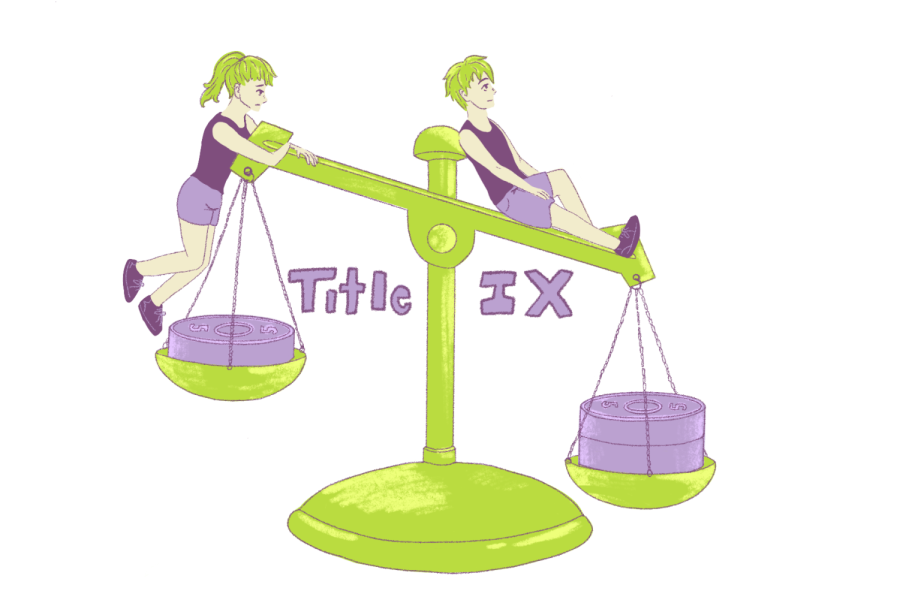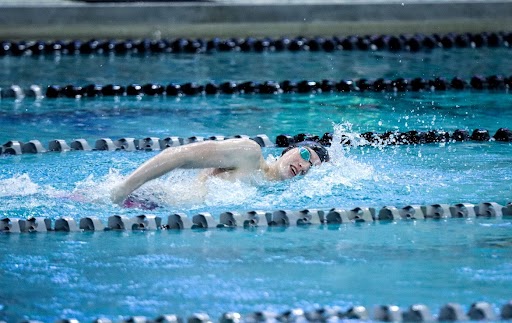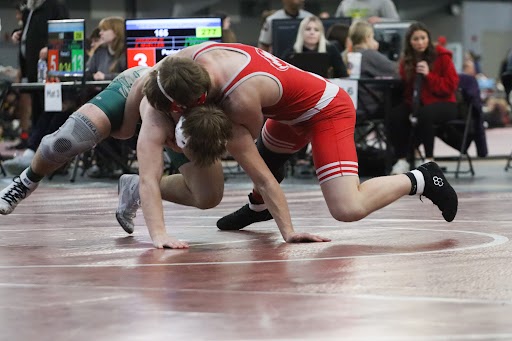Leveling the playing field
2022 marks the 50-year anniversary of Title IX, the legislation that made opportunities for women more equal across the board, especially in the world of sports.
No Serena Williams grand slams, no Simone Biles gravity-defying routines, no Alex Morgan goals and no Katie Ledecky golds. Without Title IX these world-renowned athletes and other women around the country would not have the chance to excel in the world of sports.
This year marks the 50-year anniversary of Title IX, a law prohibiting discrimination on the basis of sex in schools, as well as school-sponsored activities. The legislation’s passing in 1972 marked a monumental change for women at a time when women participating in sports was a second thought. Title IX worked to open new doors in ensuring a balance between the opportunities in both women’s and men’s athletics, essentially leveling the playing field.
In order to ensure equality of opportunity, Title IX is split into three different test categories institutions must fall under: proportionality, progress and interest. Each year, in order to make sure Title IX is being upheld, KSD administrators, including Athletics Directors Corey Nesslage and Brad Sutterer, look into the specifics of the law to guarantee that equal accommodations are established between both the girls’ and boys’ sports programs.
“We have over 700 students participating in sports,” Dr. Mike Havener, KHS principal, said. “We need to make sure that everything falls within equal opportunity for everyone. Getting people involved in extracurricular activities is important because studies show that people who get more involved and buy into their school experience are more successful in the classroom.”
Title IX requires equal participation opportunities for girls and boys. This does not mean an equal number of teams or spots on a roster; instead, it regards schools having participation opportunities in sports proportional to their enrollment. For example, if a school was 55% female, then 55% of sports participation should reflect those numbers. Currently, KHS athletics offer 25 different programs, 13 of which are offered for girls. If an equivalent sport is not offered for girls, like softball is to baseball or girls’ basketball is to boys’ basketball, then a sport must be considered co-ed. These sports include water polo, a true co-ed sport, and football, a sport where girls can play if interested.
 Other than proportionality, there must be evidence of expansion and growth, as well as accounting for the interests of girls in athletics. In order to further increase opportunities for girls, KHS added girls’ wrestling to their list of athletics options. Although it has not taken off as much as Nesslage intended, it is a testament to the administration’s growing urge to create more opportunities for women in sports.
Other than proportionality, there must be evidence of expansion and growth, as well as accounting for the interests of girls in athletics. In order to further increase opportunities for girls, KHS added girls’ wrestling to their list of athletics options. Although it has not taken off as much as Nesslage intended, it is a testament to the administration’s growing urge to create more opportunities for women in sports.
Funding also falls under Title IX. For KHS athletics, funding comes from three different pools: the operational budget of taxpayer dollars, athletics office generated revenue and Pioneer Boosters, Inc. (PBI). Before athletics directors receive any of the operational budget, 70%-80% is spent on transporting athletes to and from contests, according to Nesslage. The athletics office itself generates money for the programs through ticket sales and athletic passes. The last source of revenue comes from PBI’s generous $55,000-$70,000 donation each year. From these three pools, the money is split up into a predetermined budget for each program to spend on essentials, including game balls, program-specific gear and uniforms. Because Title IX requires equal treatment, equal funding is not required. Instead Title IX requires that the benefits of each be equal. For example, the football team cannot get new uniforms and helmets every year, while the girls’ softball team has not been able to purchase new gear in years. It is the idea of upholding quality over quantity of dollar value.

“Every program is different and is looked at on an individual basis,” Nesslage said. “The number is going to differ between how many kids you have and how much equipment you need for your program. What I tell coaches is that if there is something that you are needing or wanting, come see me. As the athletics director, I don’t want our kids to go without anything, so if it is something that is going to make us better as a program, we are going to find a way to get that done.”
The law also requires equality in the so-called “laundry list” in the benefits and treatment of athletes, including equipment, supplies, scheduling of games and practices, access to equal grade facilities such as gyms, locker rooms and weight rooms, and other athletic services. As long as across the board these accommodations are equal for all programs, then KHS falls within compliance of Title IX.
“Everything is the same, from the way I structure practice to how I handle meets,” Matt Beasley, head coach of both boys’ and girls’ swim and dive, said. “If anything, the girls’ program gets to experience more because we host an extra invite. Other than that it is the same experience regardless of what season you are in.”
Title IX dismisses many of the excuses that were once used to keep women out of sports for decades, whether that be economic benefit or the superiority of mens athletics. In its 50 years, Title IX was able to further establish a fundamental right: the right to play sports.
Your donation will support the student journalists of Kirkwood High School. Your contribution will allow us to purchase equipment and cover our annual website hosting costs.

She/Her
Hobbies and Interests: volleyball, watching sports, traveling, listening to music and hanging out with friends
Favorite song: Callin Baton...

she/her
Hobbies and Interests: Violin, music, art, fashion history
Favorite Song: "Madman Across the Water" by Elton John
Favorite Quote: “If...












